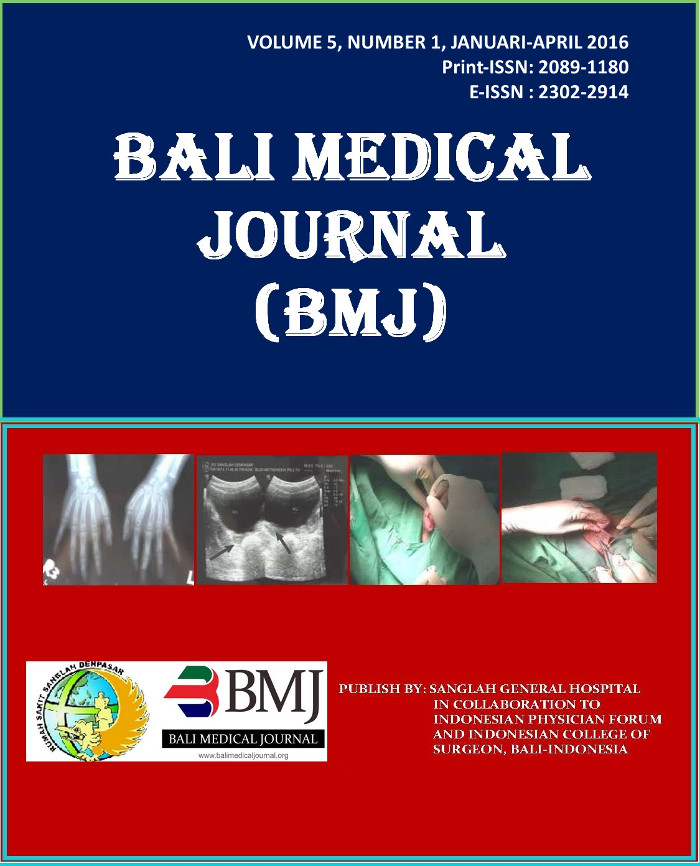Analysis of Glial Fibrillary Acidic Protein (GFAP) Serum Levels on Spontaneous Intracerebral Hemorrhage Non-Lesion Patients
Abstract
Background: Stroke is one of the root causes of brain disorders at the height of the productive age and ranks second cause of death after heart disease in most countries in the world. Fairly large-scale study conducted by ASNA (ASEAN Neurological Association) in 28 Hospitals in Indonesia. This study was conducted in patients with acute stroke who were treated in hospital (hospital-based study) and conducted a survey of factors - risk factors, treatment duration and mortality and morbidity. Method: This is a cross sectional study, with intracerebral hemorrhage Head CT scan examination then examined serum levels of plasma GFAP her at the time of patient entry from RSUP. H. Adam Malik Medan from March 2014 -May 2014. Results: In this research, we found the frequency of male patients as many (62.5%), while as many women (37.5%). Predominant age range in patients encountered in this study were 46-51 years old and are the dominant ethnic Batak tribe (43.8%). Conclusion: There were no significant differences between groups in serum GFAP levels with bleeding volume ? 30 cc compared to those with bleeding volume <30 cc (p = 0.599). GFAP is a biomarker to distinguish whether stroke patients including intracerebral hemorrhage or ischemic stroke Further longitudinal study would be needed to confirm the role.Downloads
Download data is not yet available.
Published
2016-04-30
How to Cite
INDHARTY, Suzy; JAPARDI, Iskandar; FADHLI, Muhammad.
Analysis of Glial Fibrillary Acidic Protein (GFAP) Serum Levels on Spontaneous Intracerebral Hemorrhage Non-Lesion Patients.
BALI MEDICAL JOURNAL, [S.l.], v. 5, n. 1, apr. 2016.
ISSN 2302-2914.
Available at: <https://ojs.unud.ac.id/index.php/bmj/article/view/21790>. Date accessed: 25 dec. 2025.
Issue
Section
Articles
Keywords
Stroke, GFAP, Intracerebral hemorrhage.


